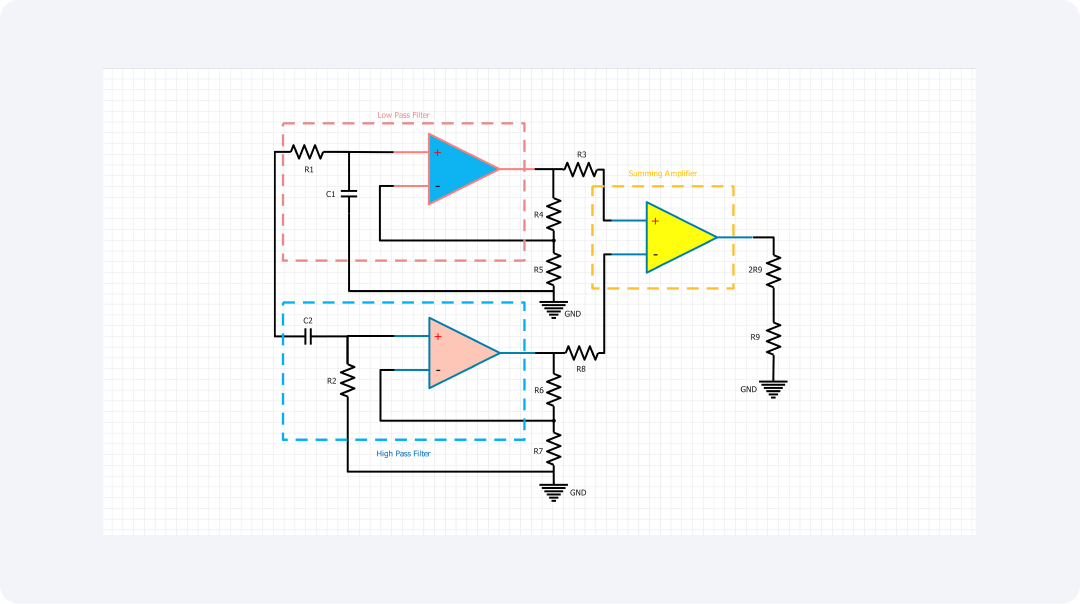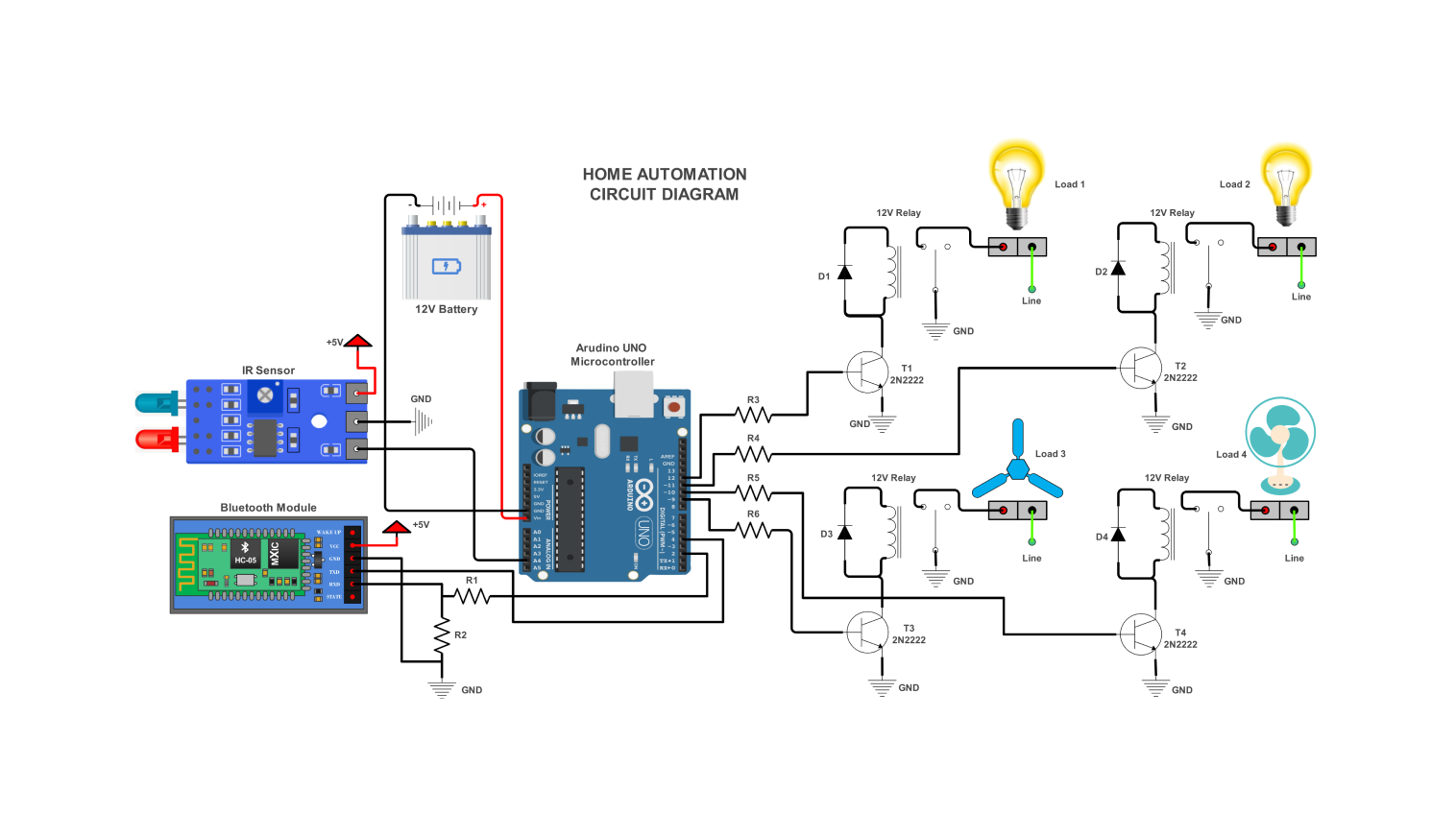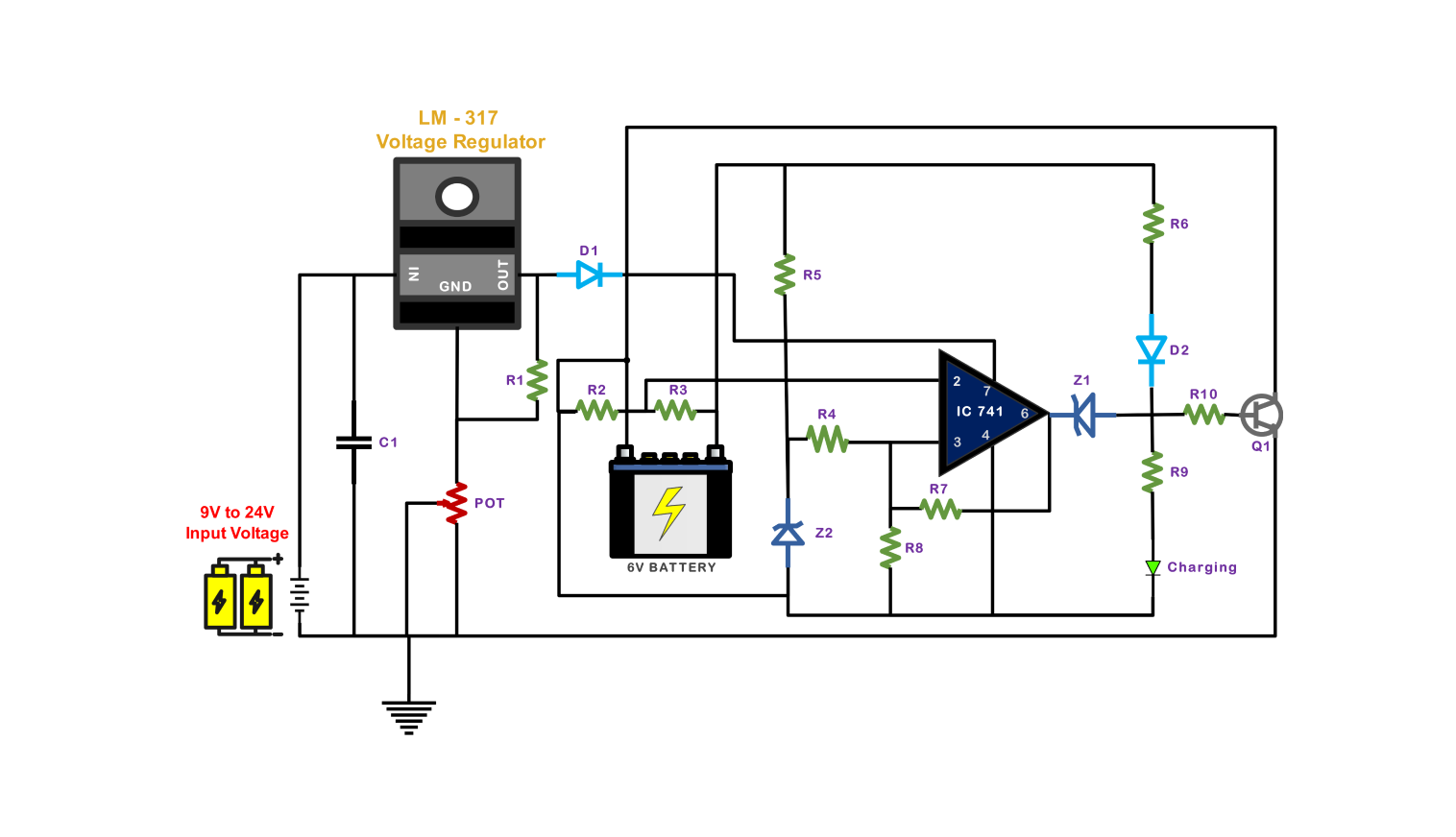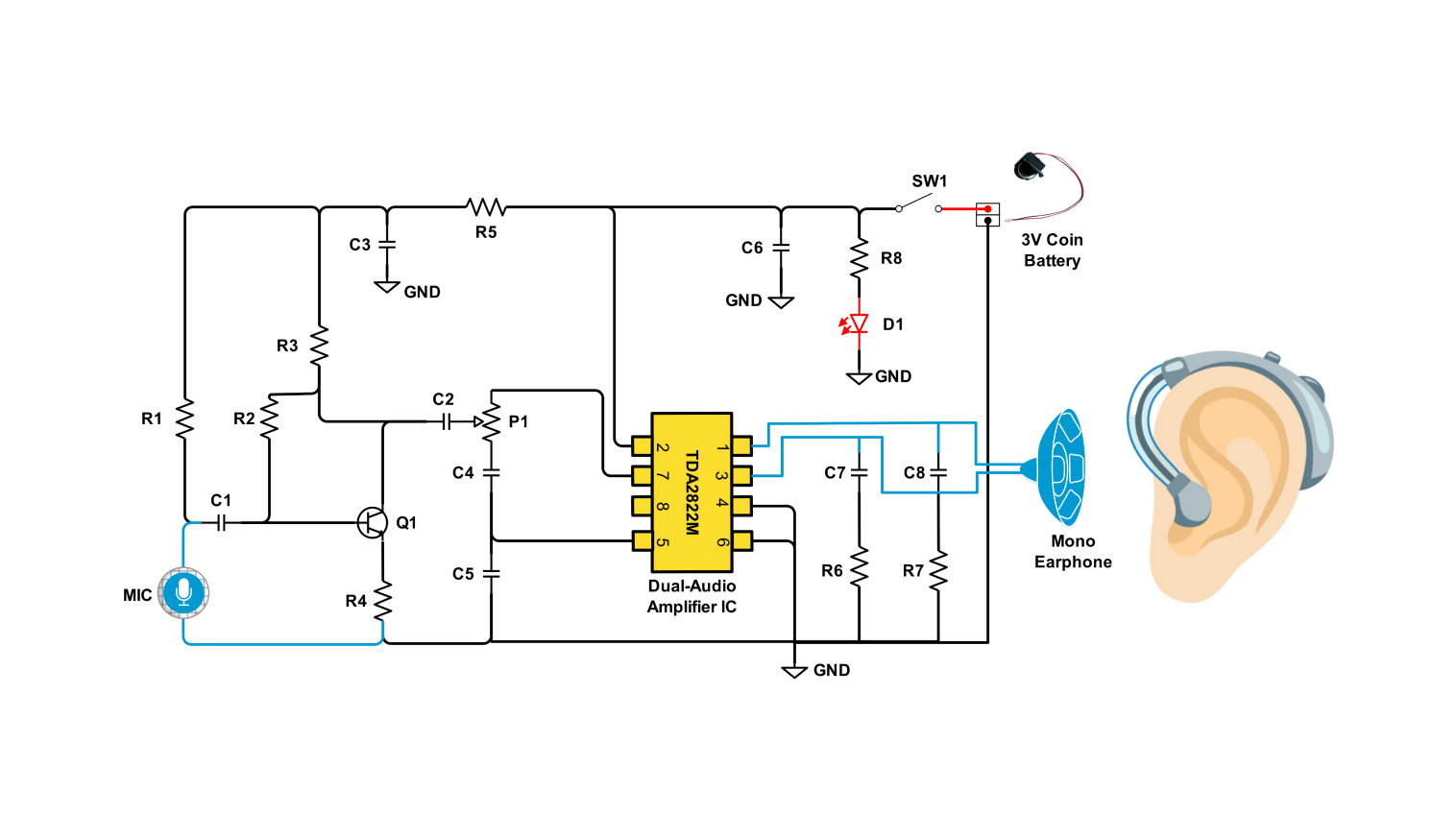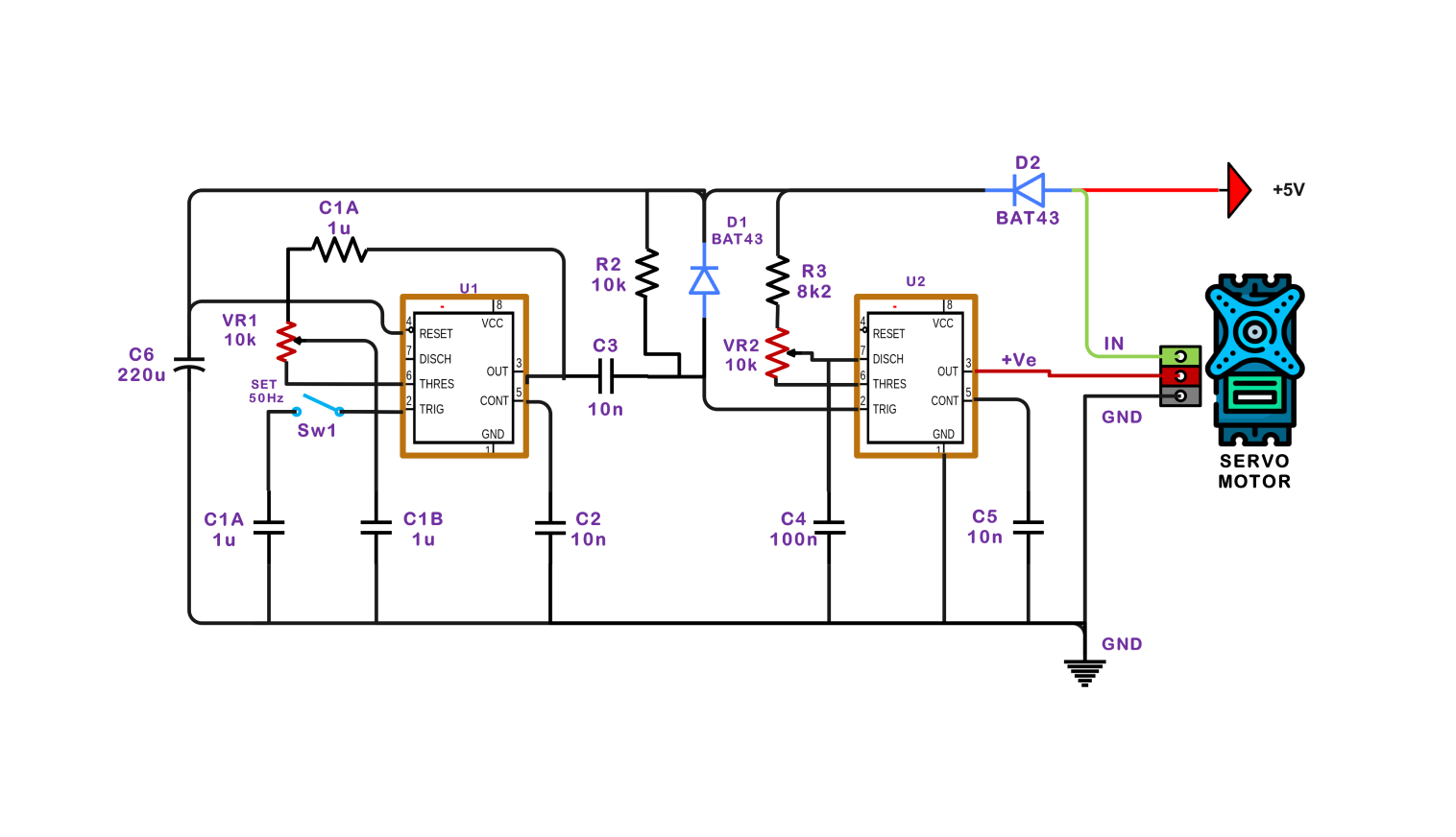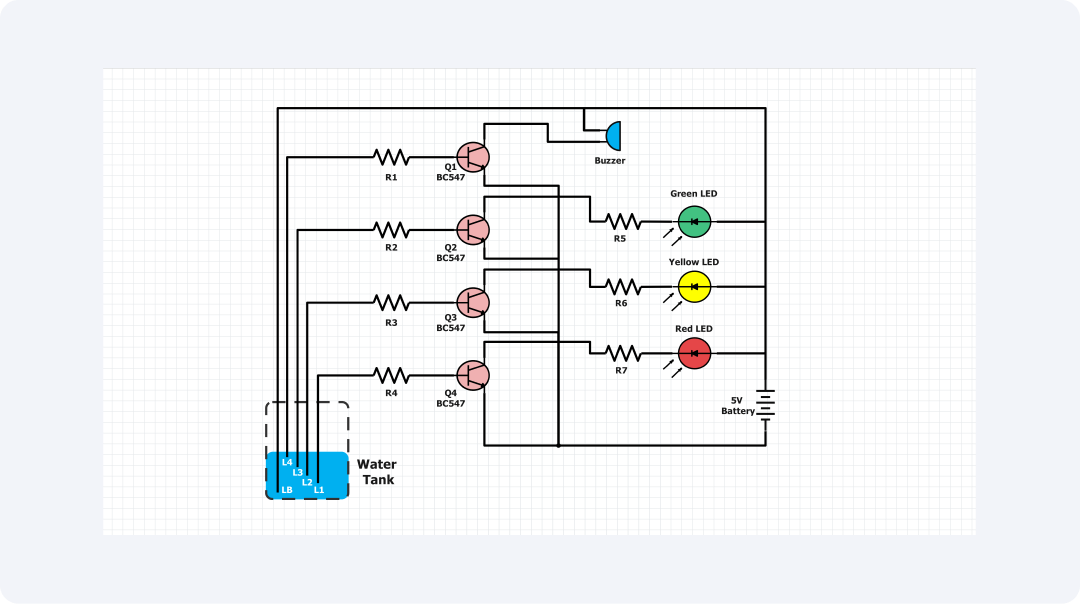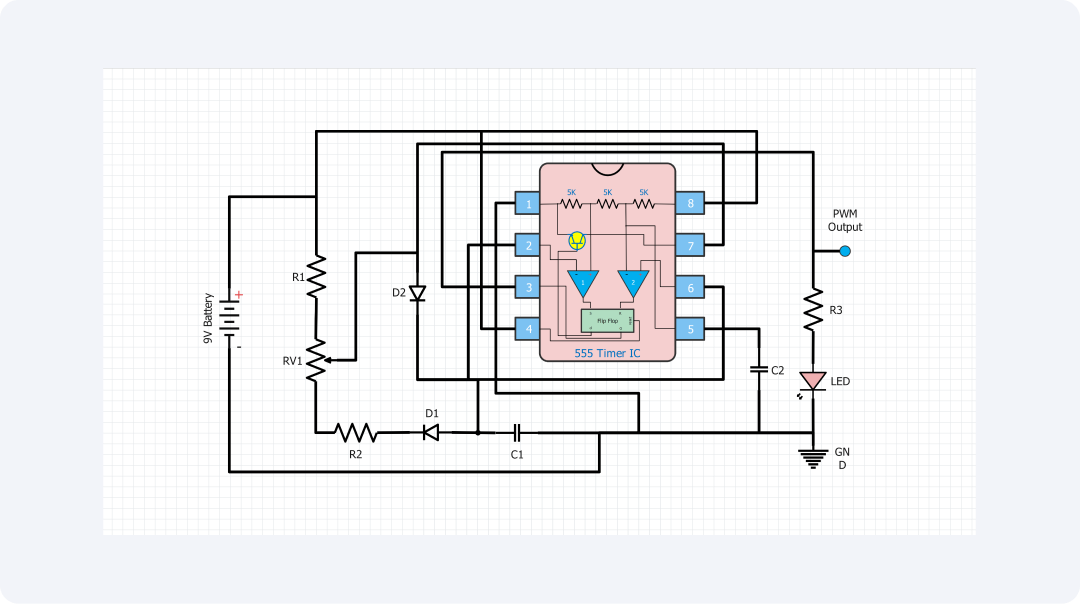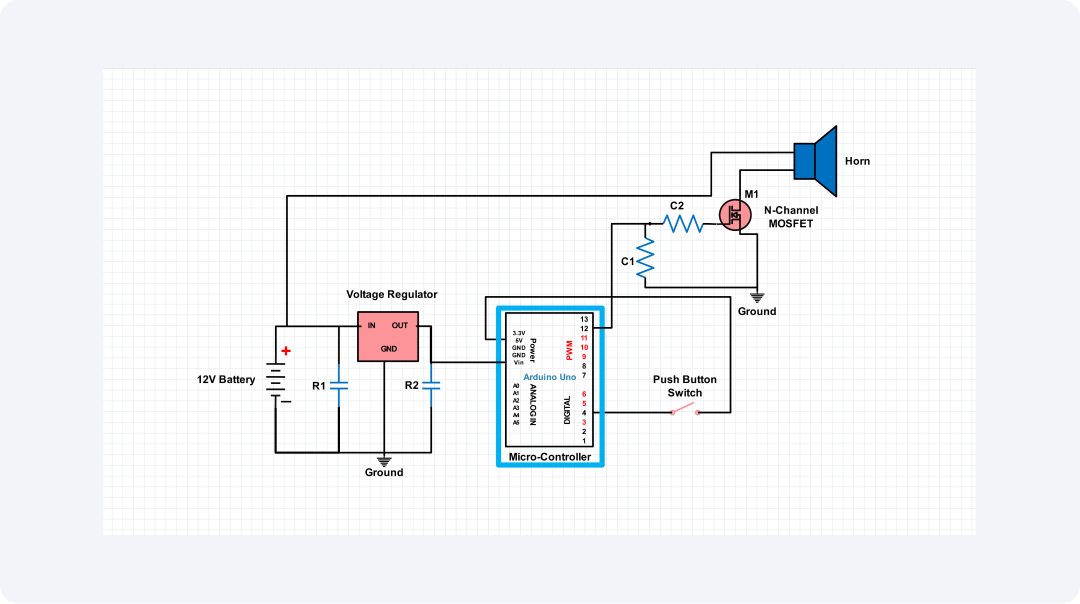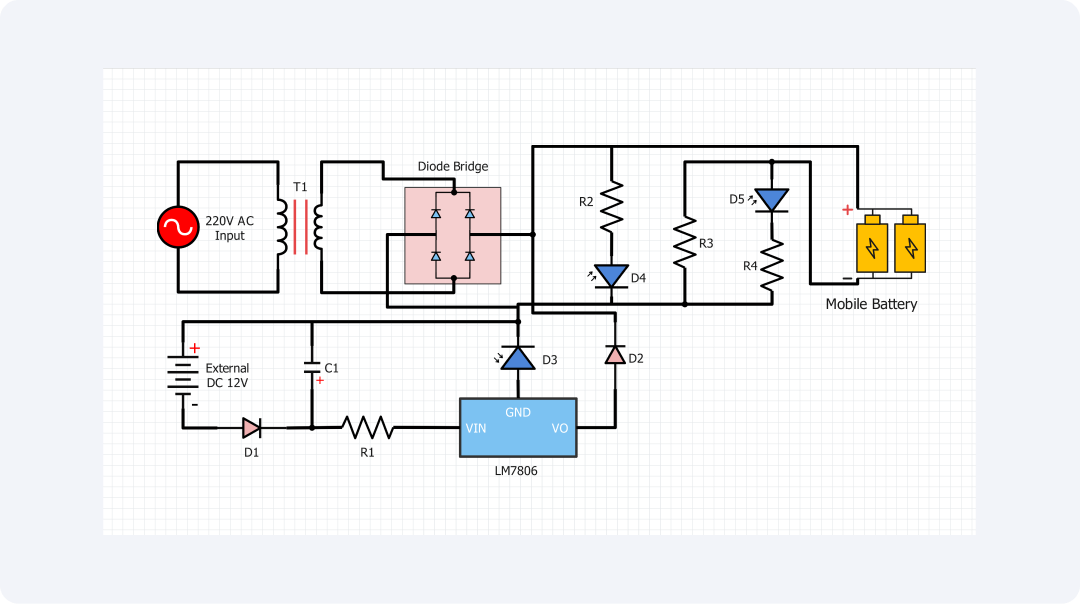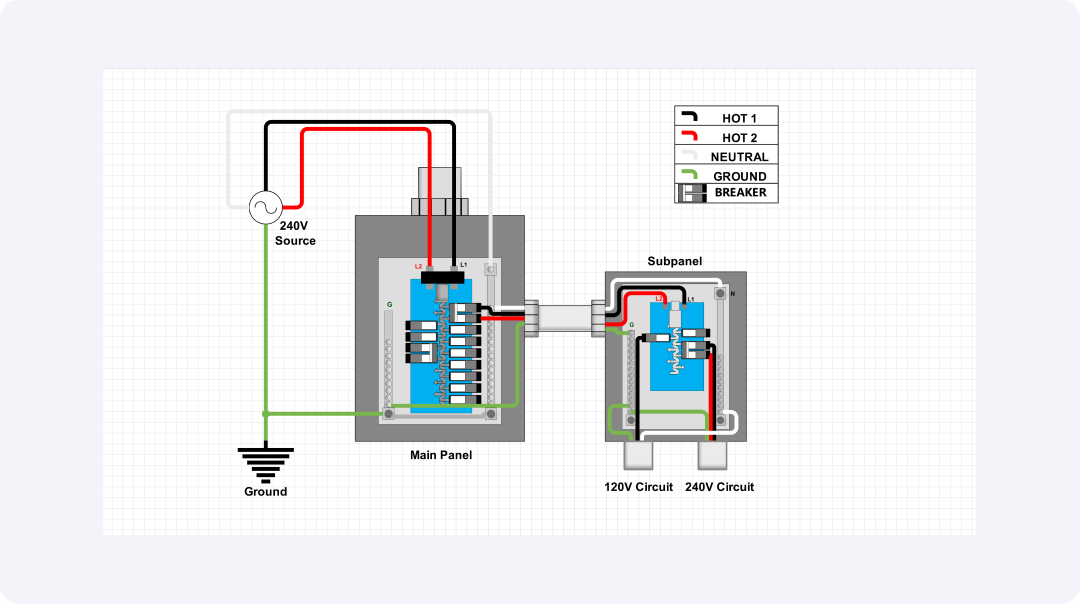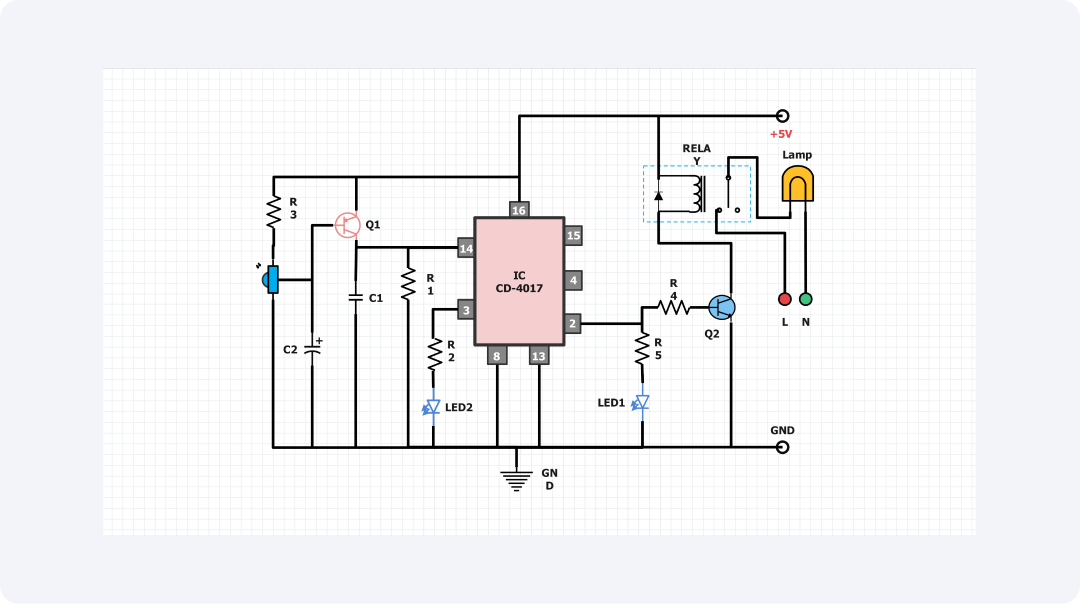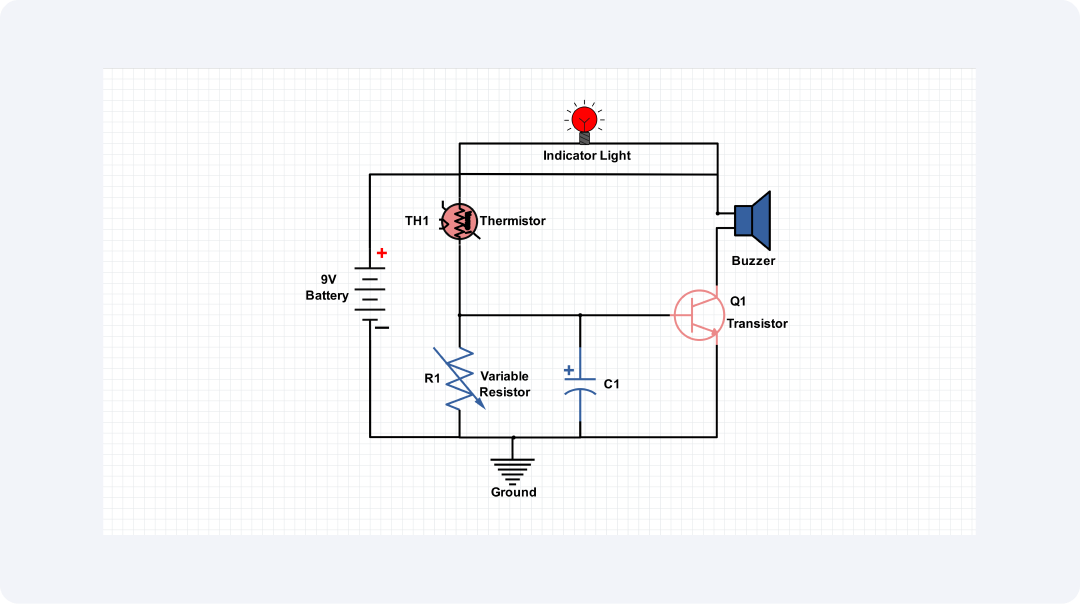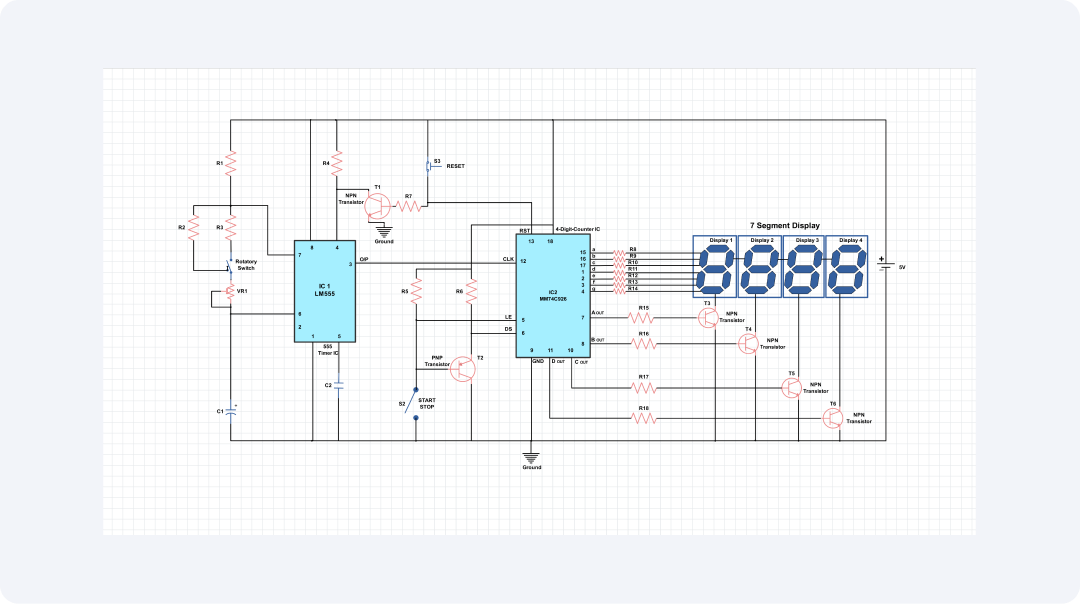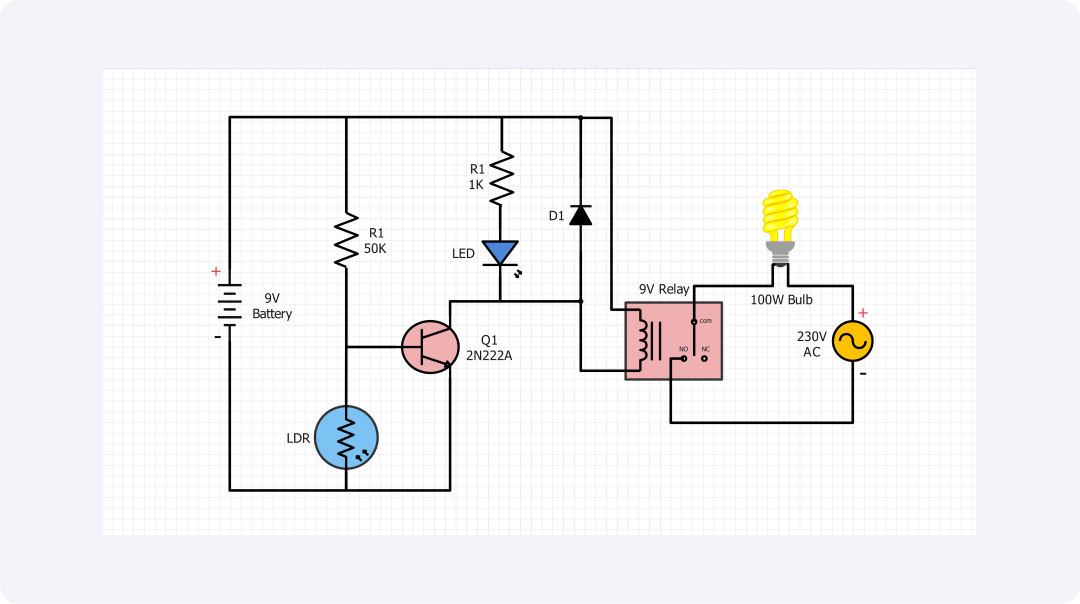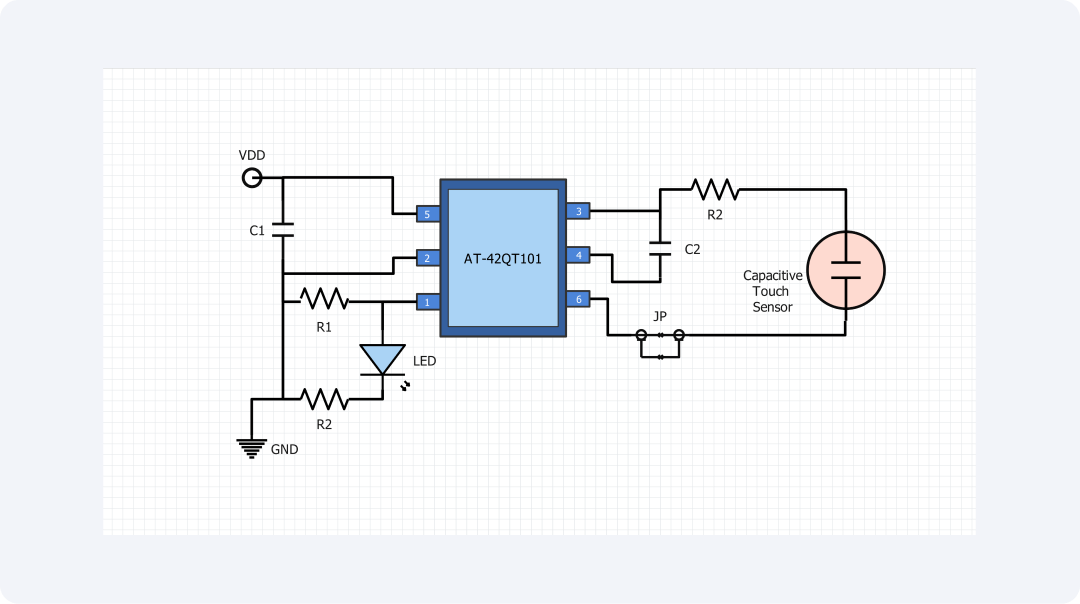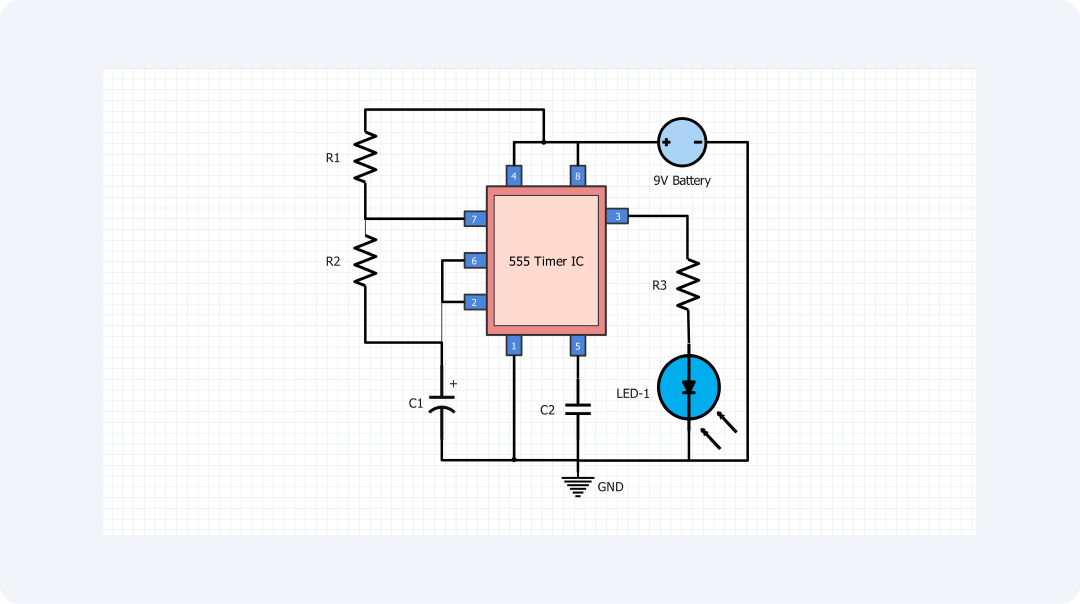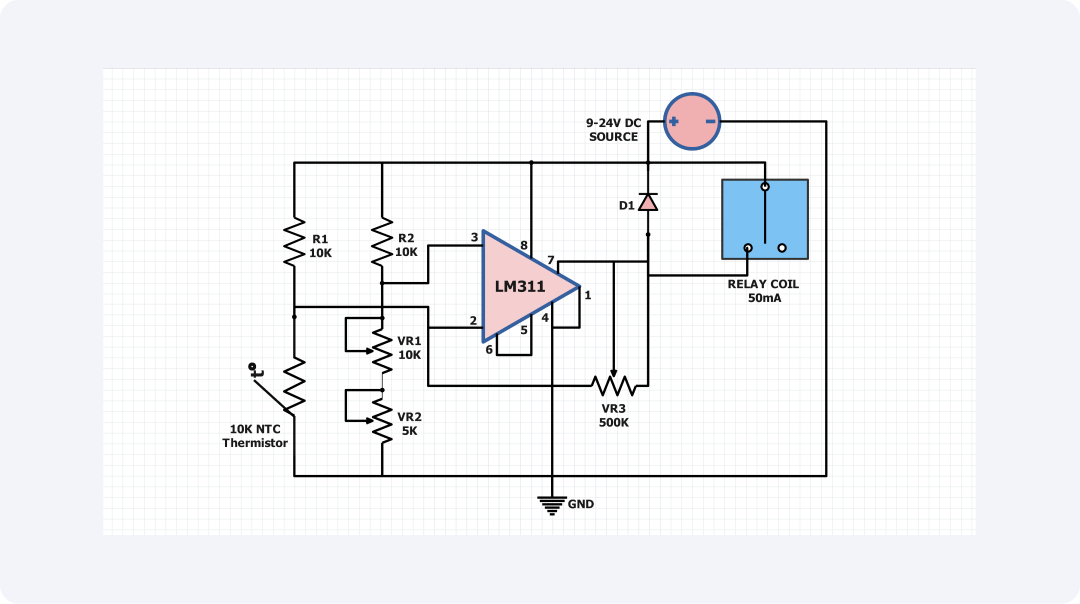- Templates
- Circuit diagram templates
- Notch filter circuit diagram
About this notch filter circuit diagram
This circuit diagram shows a notch filter. A notch filter is an important electronic filtering that is used to remove a particular or individual frequency while allowing other frequencies to pass.
It is widely applied to audio processing and communication systems, and used for eliminating undesired signals and improving an actual signal's quality and signal-to-noise ratio, correspondingly. In this circuit, there are three basic parts: the low-pass filter, high-pass filter, and summing amplifier.
The low-pass filter circuit with R1 and C1 lets through frequencies below a specified cutoff. It dampens the others. The active high pass filter integrator, made of R2 and C2, allows frequencies above the cutoff. It rejects those below it.
The notch filter is made by connecting a low-pass and a high-pass filter in a summing amplifier. This technique amplifies the input signal and greatly reduces a narrow frequency range. The summing amplifier is designed using operational amplifiers R3, R4, R5 and R6.
The resistors R7, R8, and R9 set the gain and frequency response of the summing amplifier. They let the designer easily control the notch filter's depth and width. It also lets the circuit select a frequency range. This range contains noise and interference, like power line and mechanical vibrations.
Notch filters can be used in various electronic systems. They suppress a narrow band of frequencies from an input signal. These are in the areas of audio processing, instrumentation, communication, and industrial control. The notch filter is somewhat useful. It removes unwanted frequencies. This boosts the signal-to-noise ratio and improves the system's performance.
The notch filter circuit has both passive and active components. It is widely used in low-energy filtering systems. Component selection for the filter characteristics makes it easier for engineers and technicians to increase or decrease its characteristics to suit their needs on projects.
Related templates
Get started with EdrawMax today
Create 210 types of diagrams online for free.
Draw a diagram free Draw a diagram free Draw a diagram free Draw a diagram free Draw a diagram free